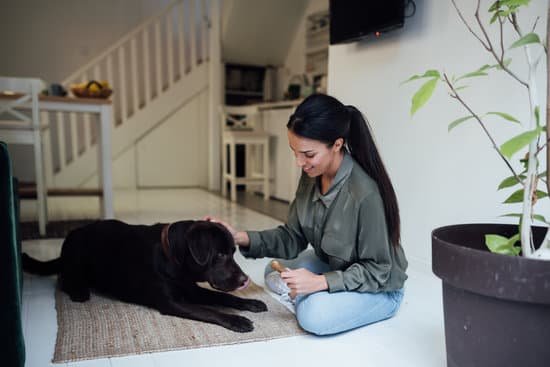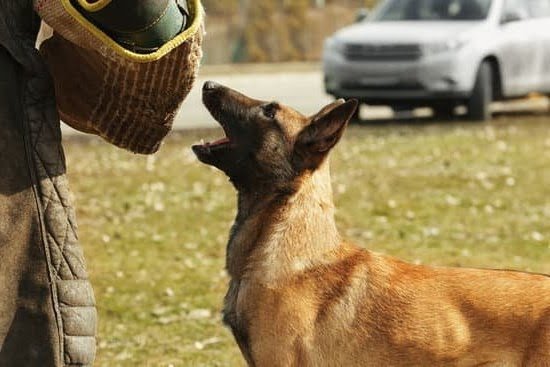Are you wondering, “how to train my dog to leave the cat alone?” Understanding the behavior of dogs and cats is essential for creating a harmonious coexistence between your pets. Dogs and cats have different instincts and communication styles, which can sometimes lead to conflict in a shared household. In this article, we will explore positive reinforcement training techniques and boundary-setting strategies to help you train your dog to peacefully coexist with your cat.
When it comes to training your dog to leave the cat alone, it’s crucial to recognize the natural behaviors of both animals. Dogs are often pack animals with a hierarchical structure, while cats are more independent and territorial. Understanding these innate tendencies will guide you in implementing effective training methods that respect each pet’s individual needs.
In addition to understanding their behavior, positive reinforcement training plays a significant role in shaping your dog’s behavior towards the cat. By using rewards and praise for good behavior, you can encourage your dog to associate positive experiences with respecting boundaries around the cat. This approach promotes a loving and respectful relationship between your pets while addressing any potential conflict or aggression.
The Importance of Positive Reinforcement Training
Positive reinforcement training is a crucial aspect of teaching your dog to leave the cat alone. This type of training involves rewarding your dog for good behavior, rather than punishing them for unwanted behavior. When your dog receives a reward for leaving the cat alone, they are more likely to repeat that behavior in the future. Positive reinforcement creates a strong association between the desired behavior and the reward, making it an effective method for training dogs.
To train your dog to leave the cat alone using positive reinforcement, start by identifying specific behaviors you want to encourage, such as ignoring or walking away from the cat when prompted. When your dog demonstrates these desired behaviors, reward them with treats, praise, or playtime. Consistency is key when using positive reinforcement – it’s important to reward your dog every time they exhibit the desired behavior to reinforce the association between the action and the reward.
Another important aspect of positive reinforcement training is timing. It’s crucial to deliver the rewards immediately after your dog exhibits the desired behavior so that they can make a clear connection between their actions and the positive outcome. By consistently using this approach, you can effectively teach your dog to leave the cat alone while strengthening their bond with you in a positive way.
| Desired Behavior | Reward |
|---|---|
| Ignoring the Cat | Treats |
| Walking Away from the Cat | Praise |
Assessing the Relationship Between Your Dog and Cat
Understanding the Dynamics
Before embarking on training your dog to leave the cat alone, it is important to take a step back and observe the dynamic between your pets. Is your dog simply curious about the cat or does it display aggressive behavior towards it? Understanding how they interact with each other will help you tailor your training approach accordingly.
Identifying Triggers
Take note of any specific triggers that may cause your dog to chase or bother the cat. It could be certain movements, sounds, or even territorial behavior. By identifying these triggers, you can work on desensitizing your dog to them and ultimately prevent any negative interactions.
Observing Body Language
Both dogs and cats communicate through body language. Pay attention to their posture, facial expressions, and vocalizations when they are around each other. This will give you valuable insight into their feelings towards one another and help you address any underlying issues.
By carefully assessing the relationship between your dog and cat, you can gain a better understanding of the root cause of any conflict or tension between them. This will lay a solid foundation for implementing training techniques that will foster harmony and peaceful coexistence in your household.
Setting Boundaries and Creating Safe Spaces for Both Pets
Establishing Boundaries
When it comes to training your dog to leave the cat alone, it is crucial to establish clear boundaries. This involves creating separate spaces for both pets where they can feel safe and secure. For example, designate certain areas of the house as off-limits for the dog, such as the room where the cat’s litter box and feeding area are located. This will help prevent any potential conflicts or confrontations between your pets.
Creating Safe Spaces
In addition to setting boundaries, it is important to provide safe spaces for both your dog and cat. These safe spaces should be places where each pet can retreat to when they need some peace and quiet.
For your cat, this could be a tall cat tree or a cozy hiding spot, while your dog may benefit from having their own crate or a designated area with their bed and toys. By giving each pet their own space, you can help reduce tension and minimize opportunities for negative interactions.
Supervising Interactions
While setting boundaries and creating safe spaces are essential, it is also important to supervise any interactions between your dog and cat, especially during the initial stages of training. Keep a close eye on their behavior and step in if you notice any signs of aggression or discomfort. This will allow you to intervene proactively and redirect their attention towards positive behaviors. With time and consistent reinforcement, your pets can learn to coexist peacefully in the same environment.
By implementing these strategies, you can create a harmonious living environment for both your dog and cat while ensuring their safety and well-being.
Techniques for Training Your Dog to Listen and Obey Commands
Training your dog to leave the cat alone can be a challenging but achievable task with the right techniques and approach. One of the key aspects of training your dog is teaching them to listen and obey commands. This requires consistent and positive reinforcement training methods to help your dog understand what behaviors are acceptable when it comes to interacting with the cat.
First and foremost, it’s important to establish yourself as the leader or alpha in the household. Dogs are pack animals and respond well to clear leadership. By taking on this role, you can effectively communicate to your dog what behaviors are appropriate when it comes to their interactions with the cat.
Another important technique is using positive reinforcement such as treats, praise, and rewards whenever your dog follows a command or displays calm behavior around the cat. This helps your dog associate leaving the cat alone with positive experiences, making them more likely to continue this behavior in the future.
Consistency is key when training your dog to leave the cat alone. It’s essential that all members of the household adhere to the same rules and boundaries when it comes to interactions between the pets. Mixed signals can confuse your dog and hinder their progress in learning how to behave around the cat.
| Training Techniques | Details |
|---|---|
| Positive Reinforcement | Use of treats, praise, and rewards for good behavior |
| Consistency | All members of the household must adhere to same rules and boundaries |
| Clear Leadership | Establish yourself as a leader in order to effectively communicate expectations |
Introducing Controlled Interactions Between Your Dog and Cat
When it comes to training your dog to leave the cat alone, it is essential to gradually introduce controlled interactions between the two pets. This step is crucial in ensuring that both animals can coexist peacefully and safely in the same household. Here are some techniques for introducing controlled interactions:
1. Supervised Meetings: Begin by allowing your dog and cat to have supervised meetings in a neutral space, such as a room that neither animal considers their territory. Use a leash and harness for your dog, and keep your cat secured in a carrier or on a high surface. This allows both pets to observe each other while preventing any potential aggressive behavior.
2. Positive Reinforcement: During these supervised meetings, use positive reinforcement techniques to reward calm and non-threatening behavior from both pets. Offer treats and praise when they display relaxed body language, ignore each other, or show signs of curiosity without aggression.
3. Gradual Exposure: Over time, gradually increase the duration of these supervised meetings, always monitoring their behavior closely. As they become more accustomed to each other’s presence, you can allow them more freedom but continue to supervise their interactions.
By introducing controlled interactions between your dog and cat, you can help them become familiar with each other’s scent and presence while minimizing the risk of conflict or aggression. Remember that patience and consistency are key when training your dog to leave the cat alone.
Consistency Is Key
Establishing a routine and reward system is crucial when it comes to training your dog to leave the cat alone. Consistency in your approach will help reinforce good behavior and discourage negative behavior. Here are some tips on how to establish a routine and reward system:
- Set a consistent schedule for feeding, walking, and playtime for both your dog and cat. This will help them understand what to expect and reduce any potential conflicts between them.
- Use positive reinforcement techniques such as treats, praise, or toys to reward your dog for ignoring the cat or following commands related to leaving the cat alone. This will encourage the desired behavior and make the training process more effective.
- Be patient and persistent in implementing the routine and reward system. It may take time for your dog to understand what is expected of them, so consistency is key in reinforcing the training.
It’s important to keep in mind that every pet is different, so it’s essential to tailor the routine and reward system to fit the specific needs and personalities of your dog and cat. By establishing a consistent routine and using positive reinforcement, you can effectively train your dog to leave the cat alone while promoting harmony between your pets.
Remember, training takes time, patience, and dedication but with consistency and positive reinforcement, you can help create a peaceful coexistence between your dog and cat.
Seeking Professional Help if Necessary
If you have tried various training techniques and methods to teach your dog to leave the cat alone, but still struggle with their interactions, it may be time to seek professional help. A trainer or behaviorist can provide expert guidance and support to address the specific dynamics between your dog and cat.
Professional trainers and behaviorists have the knowledge and experience to assess the relationship between your pets, identify any underlying issues, and develop a customized training plan. They can offer valuable insights into the behavior of both dogs and cats, as well as provide effective strategies for managing their interactions.
When considering whether to consult a professional, take note of any concerning behaviors exhibited by your dog, such as aggression towards the cat or persistent chasing. These behaviors may indicate a deeper issue that requires expert intervention. Additionally, if your attempts to train your dog have been unsuccessful or if the situation seems to be escalating, it’s important to seek assistance sooner rather than later.
Ultimately, consulting a trainer or behaviorist can help you navigate the complexities of training your dog to leave the cat alone in a safe and effective manner. Their expertise can provide you with the necessary tools and support to create a harmonious environment for both pets, fostering peace and coexistence in your home.
Conclusion
In conclusion, training your dog to leave the cat alone is a process that requires patience, consistency, and understanding of both pets’ behaviors. Positive reinforcement training has been shown to be an effective method for teaching dogs to obey commands and respect boundaries. By using rewards and praise, you can encourage good behavior and discourage unwanted actions, such as chasing or bothering the cat.
Assessing the relationship between your dog and cat is crucial in understanding their dynamics and potential areas of conflict. Creating safe spaces for both pets, setting boundaries, and introducing controlled interactions are important steps in ensuring a peaceful coexistence. Consistency is key in maintaining the routine and reward system, which will help reinforce positive behaviors over time.
If you find that despite your efforts, your dog continues to harass the cat, it may be necessary to seek professional help from a trainer or behaviorist. These experts can offer personalized advice and guidance based on the specific needs of your pets. Overall, by following these techniques and being patient with the process, you can create harmony and a peaceful coexistence between your dog and cat.
Frequently Asked Questions
How Do I Stop My Dog From Obsessing Over My Cat?
To stop your dog from obsessing over your cat, you can start by creating a safe space for the cat where the dog can’t access. This will allow the cat to feel secure and reduce the dog’s obsession.
How Can I Get My Dog to Calm Down Around My Cat?
Getting your dog to calm down around your cat requires gradual desensitization and positive reinforcement. Start by keeping them separated and then slowly introduce controlled interactions while rewarding calm behavior from the dog.
Can You Train a Dog to Tolerate a Cat?
Yes, you can train a dog to tolerate a cat through desensitization training. By using treats and positive reinforcement, you can teach the dog to associate the presence of the cat with something positive, reducing their aggression or over-excitement.

Welcome to the blog! I am a professional dog trainer and have been working with dogs for many years. In this blog, I will be discussing various topics related to dog training, including tips, tricks, and advice. I hope you find this information helpful and informative. Thanks for reading!





